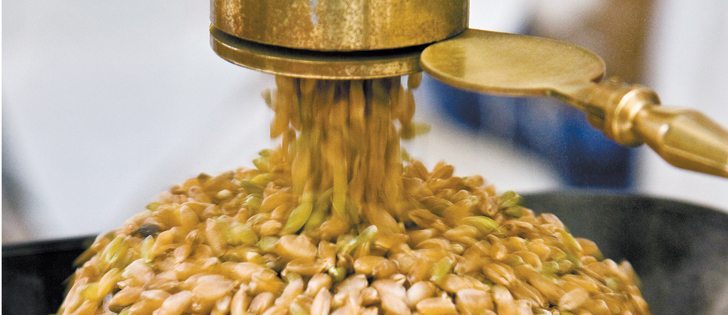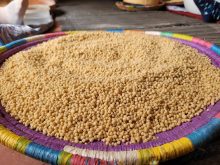IGC’s forecast a surprise | Pressure remains from Europe’s economic problems and expectation of Canadian exports to U.S.
A bullish global durum outlook should provide a floor for prices that have been plummeting since the calendar flipped over to 2012, says an industry analyst.
The International Grains Council is forecasting 35.9 million tonnes of world durum production in 2012-13, down 800,000 tonnes from last year.
“Oh wow,” said Jim Peterson, marketing director for the North Dakota Wheat Commission, when he heard that number.
He was anticipating something more along the lines of last year’s 36.7 million tonne crop.
Peterson was particularly surprised by the IGC’s European Union total of 7.4 million tonnes, which is about 400,000 tonnes smaller than he expected. The drought in Spain appears to be worse than many had thought.
Read Also

Pakistan reopens its doors to Canadian canola
Pakistan reopens its doors to Canadian canola after a three-year hiatus.
He was also taken aback by the North American estimates. The IGC is forecasting a 4.5 million tonne Canadian crop, which is quite a bit lower than Agriculture Canada’s 4.9 million tonne forecast, up from 4.2 million tonnes last year.
“Our expectation is that the Canadian production may come in closer to five million tonnes,” said Peterson.
The smaller-than-expected Canadian crop is partially offset by a larger-than-expected U.S. crop. The IGC is forecasting 2.5 million tonnes.
Peterson thinks it will be closer to 2.2 million tonnes because final plantings will likely be lower than the U.S. Department of Agriculture estimated in its March planting intentions report.
There was plenty of grower interest in competing crops like sunflowers, canola, winter wheat and malt barley.
The IGC report will likely lend strength to flagging durum prices. U.S. growers have seen old crop prices fall to $6.75 per bu. from $12 per bu. last November.
“I don’t think it’s going to be immediate but it may start to get a little more buoyant in some of the durum markets or at least start putting some floor under it,” said Peterson.
U.S. growers are “frustrated and puzzled” that prices have fallen 44 percent after they harvested half of a normal crop.
Peterson said part of the problem is that durum has been hurt more than other classes of wheat by the European economic crisis because the European Union typically accounts for about 30 percent of world durum trade.
The other factor keeping new crop bids for milling quality durum in the $7 per bu. range is the expectation that Canadian growers will be eager to sell durum into the U.S. at those values under an open market.
The Canadian Wheat Board was typically a stingy seller of the crop. U.S. pasta plants and durum millers think that will change in the post-single desk environment.
“They’re anticipating, at least in this first year, it’s going to be easier to access Canadian durum,” said Peterson.
Even fierce competitors of the CWB like CHS Inc., a large U.S. grain co-operative, are looking north of the border for durum supplies.
The IGC is forecasting 7.4 million tonnes of world durum imports in 2012-13, up 300,000 tonnes from last year due to more demand out of the EU, the U.S. and Morocco.
















